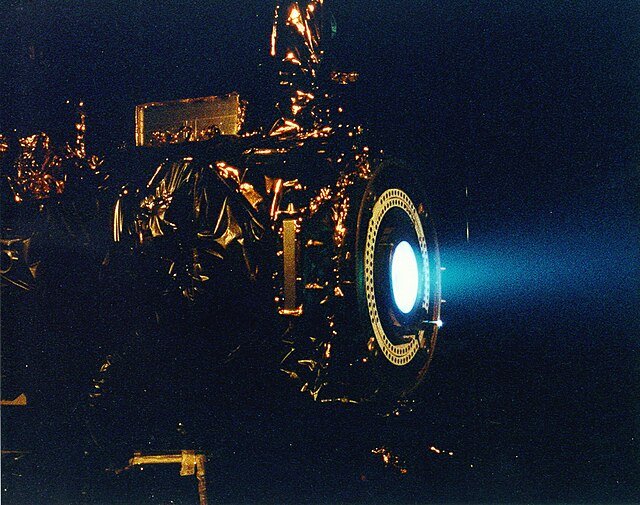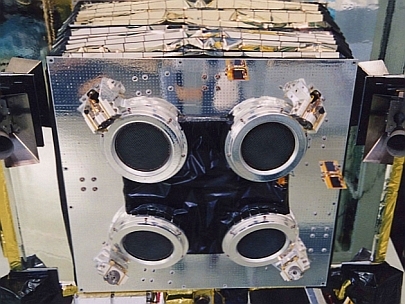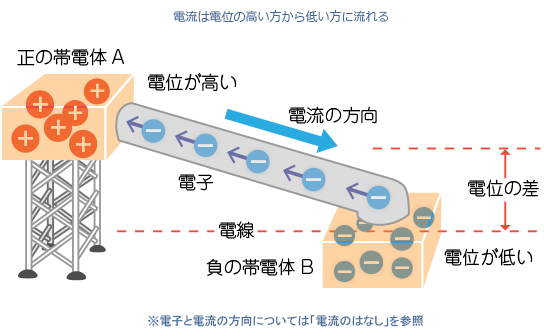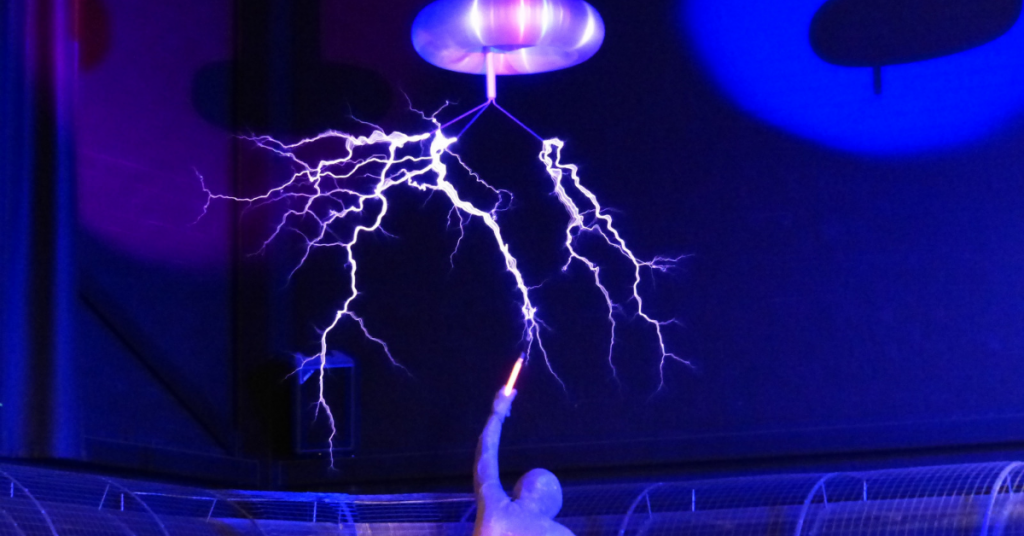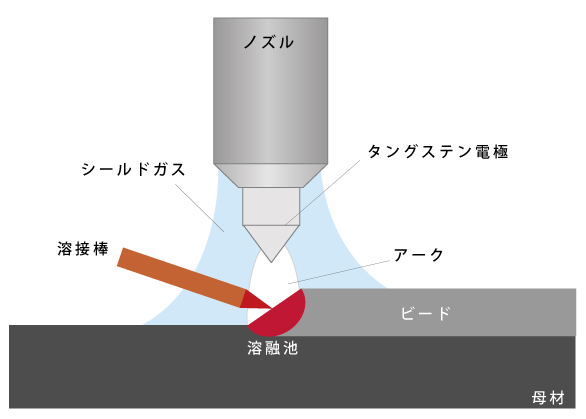As a result of conducting research based on the belief that “if you want to create a basic theory for advancing into space, you should first understand the current situation,” the research was incredibly long.
Here, we will go back to the basics and learn about the principle of “plasma” and the ion engine installed in the legendary and impressive asteroid explorer “Hayabusa”.
About electric propulsion
This article was originally written as a summary article about the current propulsion method in outer space.
The main character of this time is the ion engine.
Ion engine
This ion engine was also used in the legendary probe “Hayabusa”.
It seems to be very commonly equipped on current satellites.
The feature is that it is introduced with a meaningless explanation such as “using microwaves to generate plasma and inject it to advance”.
First, “What is Plasma?”
In order to understand the principle of the ion engine, it is essential to know about “plasma”.

Plasma is the state beyond solid → liquid → gas.

As the temperature rises in this state, eventually electrons leave the nucleus.
This creates positive ions and electrons flies around at high speed and irregularly.
By the way, the pairs of “positive ions” and “electrons” will come up again later.

This state is called plasma.
Solar flares, lightning, and aurorae are all phenomena caused by plasma.
Also, outer space seems to be filled with plasma.
How the ion engine works
So I came back to the mechanics of the ion engine.
First, generate plasma.
It says “Ionize xenon”, but how exactly do you do it?
It took me a long time to research this, but I will try to understand without running away.
Here, “Microwave Discharge Ion Engine Used in Hayabusa Asteroid Explorer”
There is the following description in it.
The first to succeed in space operation, and the one with the most achievements in space, is the US DC discharge ion engine that generates ions by arc discharge.
About arcing
Let’s also review the familiar word “arcing” here.
By the way, if you search for arc discharge, the related word will be “arc discharge accident”.

To put it simply, it’s like inserting “Electricity flowing between physically disconnected electrodes“.

Looking at the image above, you can see that electricity is flowing between wires that are apparently not physically connected. It’s gone.
This can be said to be a phenomenon in which space becomes a path for high power.
If that electricity accidentally flows through the human body… it’s dangerous.
Have you ever heard the word “arc welding”?

It seems that it is used in familiar places because it is easy to generate high-energy plasma. It seems that even an individual can cause an arc discharge if they want to.
I’d like to practice and shoot a video someday with a plastic bottle rocket.
I don’t want the police to take care of me because I’m strangely exploding or being distorted, but…
Plasma generation in Hayabusa
Now that we know the principle of arc discharge, let’s think about the principle of plasma generation in Hayabusa.
It says that a very small amount of xenon gas, 3 cubic centimeters per minute, is separated into positive ions by microwaves.

But here’s what I thought.
“What is the energy source for the xenon gas?“.
About Hayabusa’s battery situation
Since it has a solar panel, it must also have a battery to store the energy it generates. I got off track but tried to find out.
In the story of JAXA’s asteroid explorer “Hayabusa”, “ measures 188mm x 215mm x 153mm and weighs about 7.6kg. 1 battery. Uses a lithium-ion secondary battery. Capacity is 13.2 Ah.“.
Also, for solar panels, “A 4.2M x 1.4M x 2-wing solar field paddle with gallium arsenide cells will generate approximately 2.6kW of power at 1.0 AU.” is also written.
By the way, 1 AU is the distance between the earth and the sun.

As we moved away from the sun, this battery would have managed all communications and systems.
As the results show, there were no problems, but I’m curious about what kind of power situation they were making.
By the way, it seems that Panasonic batteries were used in the transmitter of the capsule released during re-entry. It’s surprising that even after being launched into space and enduring vibration and heat for seven years, it still operated normally.
By the way, the fuel xenon is 66 kg It looks good to see that it was loaded.
Incidentally, the structural weight of the probe is 370kg. It weighs about the same as the big bikes out there.
Ionized xenon is the driving force
Now, after the plasma is created from xenon, the generated positive ions are ejected by the potential difference.
What you absolutely need to understand and review here is the concept of “potential difference and electron transfer“.
Current flows from low potential to high potential.

Electrons flow in the opposite direction to current, so electrons flow from low potential to high potential< /span>. It’s a nostalgic story.
By the way, Wikipedia says “Positive Positive ions with an electrical charge start accelerating toward the negative electrode.”
I seriously thought about this and got stuck, so I will proceed as it is for now.
『Hayabusa 2 The reason why you can go to an asteroid far away and come back” describes this area in detail.

There is a voltage difference in each part written as “grid” in the above figure.
Screen (+1500V), accelerator (-350V), decel (-30V) (Source).
A potential difference of 1850V launches the ions into space.
This satisfies the law of action and reaction, and Hayabusa can move forward.
About Neutralizer
In addition, it is written that a function called “neutralizer” is also attached.
The thing that grows next to the nozzle is the neutralizer.

Xenon is ionized inside the neutralizer and electrons are emitted.
The electrons emitted here and the xenon positive ions emitted from the ion engine are combined and neutralized.
This seems to prevent the leftover electrons from clinging to the surface of the spacecraft and attracting the xenon cations that have been shot out.
Summary
It’s been pretty long and I’m exhausted…
Although the number of characters is also the largest class ever, we have only put together one ion engine.
“I don’t understand the explanation on the explanation page”, so many pioneers Even with your description, I was forced to struggle.
I proceeded with the research and description carefully so as not to make any mistakes, but I am not an expert in space science, so I am not sure if it is correct.
I still publish articles.
In addition, the featured image of the article was quoted from the following site.
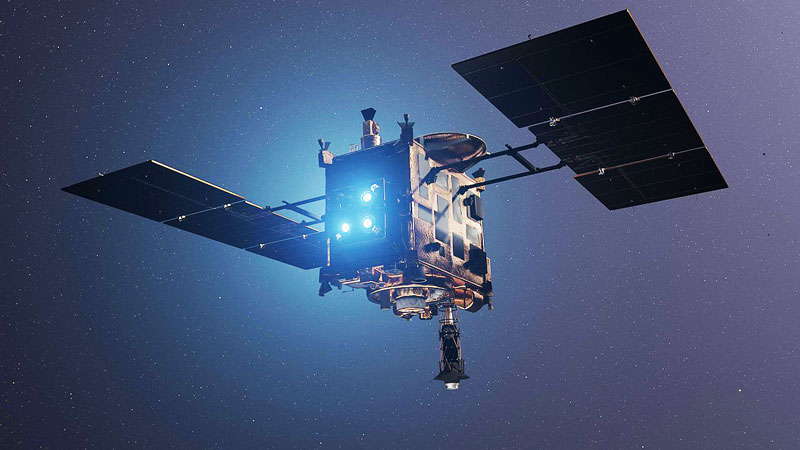
Referenced website




